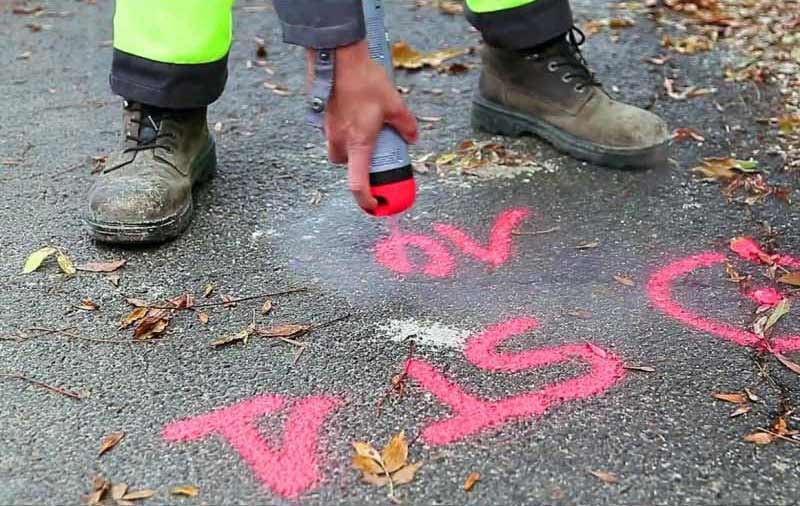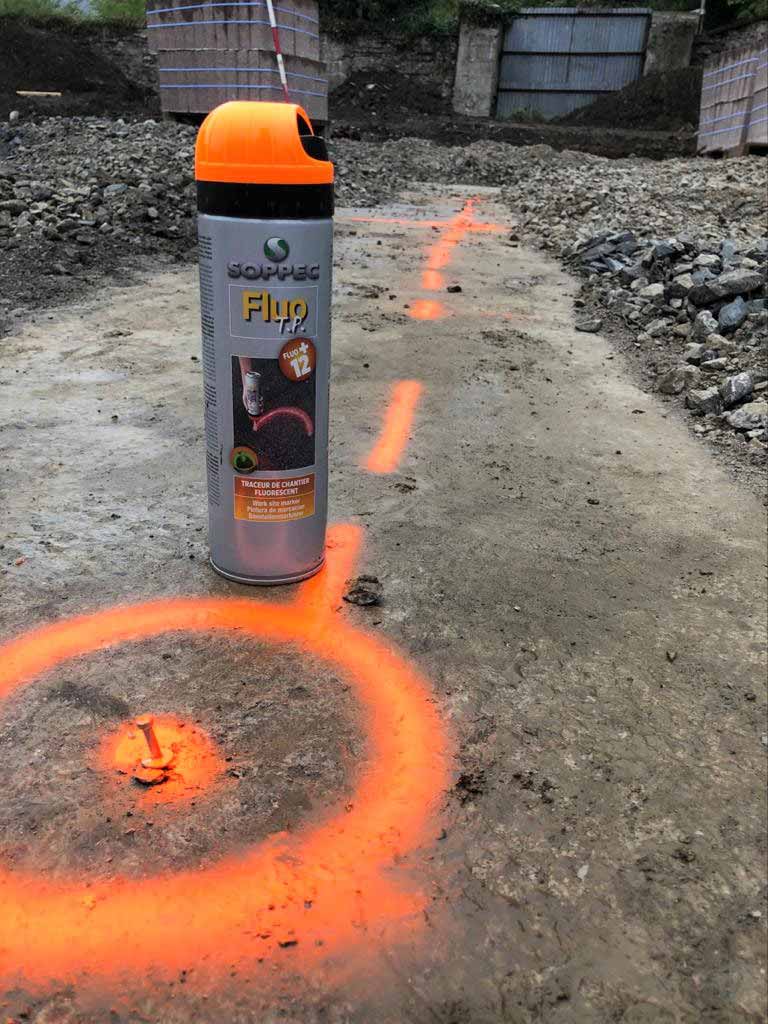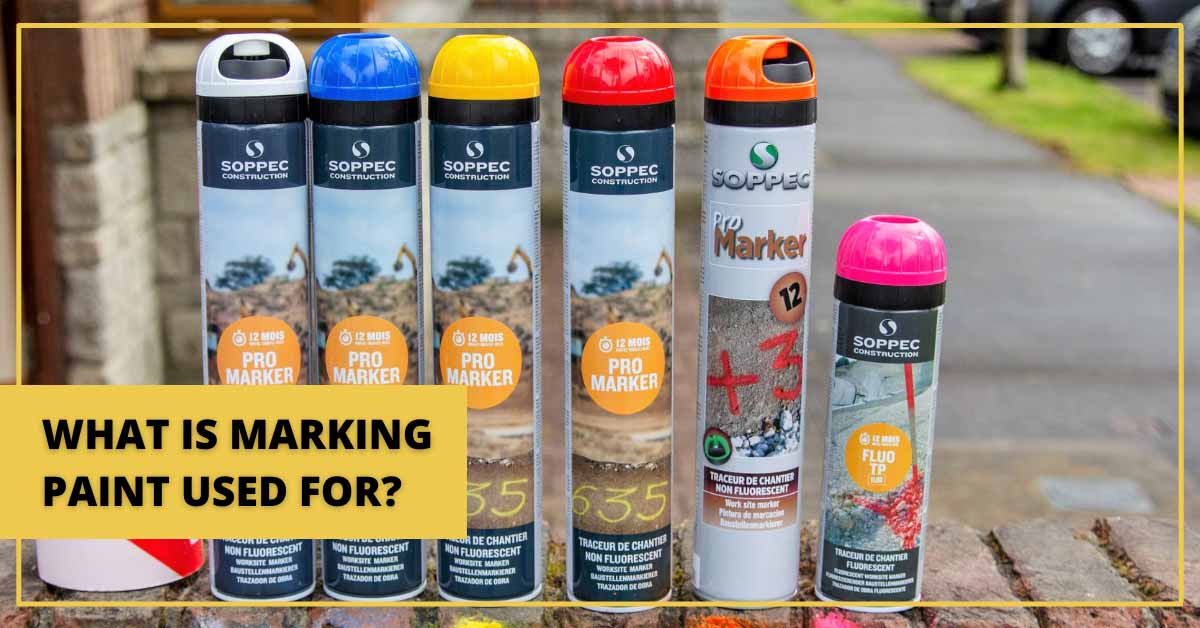What is marking paint used for?
Posted by Philip Hanrahan B.E., B.A., M.I.E.I. on 12th Jan 2022
Marking spray paint is formulated to meet a variety of marking applications and designed to adhere to most surfaces including pavement, gravel, soil and even grass. It should be highly visible and long-lasting, with the best ones out there lasting up to even 12 months.
What do you use marking paint for?
Marking paint is utilized by professionals in a variety of industries, from construction to event planning. It can be used for laying down lines on athletic fields, marking trees for cutting or marking outdoor events or social distancing areas.
Spray paint is also one of the types of ground marking accessories used by land surveyors, utility locators, and other professions that need to mark locations on the ground. It helps visualize information from the maps and blueprints, as well as locate and identify underground utilities.

So how do you know what the markings on the ground or building mean?
Marking paint colors and their meaning
Keeping track of what’s exactly buried underground on a worksite is very important, especially when excavation or other work involving underground services are carried out. It helps to reduce incidental damage to the underground services and, most importantly, ensures safety of the crew.
Construction workers, surveyors and other professionals use different colors to identify unseen hazards or mark out excavation limits. The colors are determined by uniform color code followed by all professionals to avoid confusion. This way you can be sure that wherever you are, ground markings in specific colors mean the same thing.
- Red: electric power lines, cables, conduit and lighting cables
Red is the traditional color for danger, which makes a great deal of sense in this case. It stands out against most surfaces making people aware of possible dangers.
- Orange: telecommunication, alarm or signal lines, cables or conduit
With our modern reliance on telecommunications, it’s wise to be careful when digging around orange markings.
- Yellow: natural gas, oil, steam, petroleum or other flammable
With the danger involved, yellow is perfect as it is the color for urgency and caution. Anyone who’s tapped into a gas line and lived to tell the tale knows the value of accurate markings for gas lines.
- Green: sewers and drain lines
These do not pose as much danger per se but it’s definitely something to avoid. A broken sewer line could earn an excavating company employee a reputation that could last his or her entire career, and wouldn’t likely result in any offers of free beers after work.
- Blue: potable drinking water
Once again, hitting a water pipe isn’t potentially as disastrous as damaging gas or power lines. But it can still have serious consequences for your project or surrounding residents.
- Purple: reclaimed water, irrigation and slurry lines
This isn't drinking water, so it may not affect others but it can still be a problem if you for example end up flooding the excavation area.
- Pink: temporary survey markings, unknown/unidentified facilities
This color is often used by land surveyors to indicate the legal boundaries affecting the project.
- White: proposed excavation limits or routes
White paint on the ground shows limits of the excavation for things such as basements, or even just a trench.

Why is ground marking so important?
The main reason for using construction spray paint and other ground markers is to ensure your team’s safety. They help identify unseen hazards that need to be taken into account to avoid serious injuries or even fatalities. It is required by law and has to be taken seriously.
Proper ground marking also means you won’t end up with costly repairs when you accidentally damage existing utilities like power lines or sewers. The last thing you need is unexpected expenses and delays.
Marking out known utilities and features also benefits the planning team. They can decide on any necessary changes or additions to the existing infrastructure, plan the positioning of walkways, parking areas, and more. Seeing the elements marked on the ground can even indicate opportunities to save money by moving some of the utilities.
If you see these markings, pay attention, because there’s something important underneath. Don’t try to wash them away, don’t cover them up or draw over them (unless there are some changes that need to be made and have been approved).
When putting down your own markings always use durable, easy-to-see construction grade line marking paint like Soppec Promarker or Fluo. They offer great coverage on almost any surface, including asphalt, gravel, sand or grass.
Reach out to us today if you have any questions or would like to avail of our bulk pricing offer. We’ll be happy to help.

